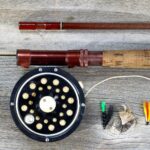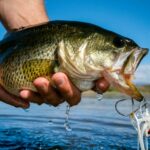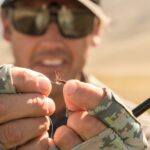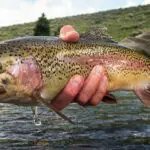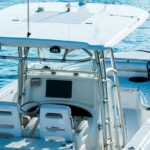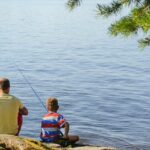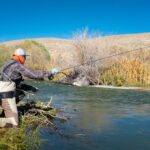Spending time in nature can be as challenging as it is rewarding, but it can also be a time to relax and experience the outdoors. Fishing combines all these elements into one experience, leaving you with a sense of accomplishment and peace. If you’re new to the world of fishing, you may wonder how to get the most out of your trip and what equipment to use.
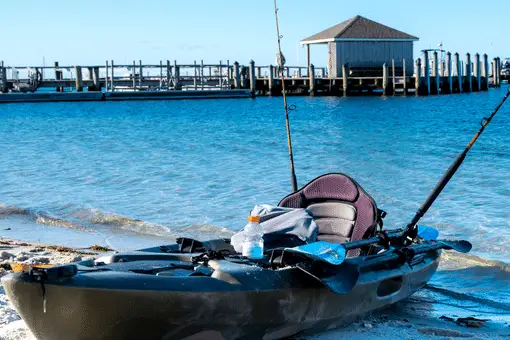
There are many different ways to fish, but one of the most popular is fishing from a kayak. Kayak fishing is popular because it allows for freedom of movement and a small, portable method of transport and because a kayak fishing trip is a great way to spend the day.
If you make sure to bring all your supplies along for the ride, you can spend the entire day drifting down a river and enjoying your time in nature.
What Is Kayak Fishing?
Kayak fishing has increased in popularity over the past few years, and with good cause! It’s a great way to spend time outdoors, and since kayaking has become a popular sport and leisure activity, it’s only natural that fishing from a kayak would rise in popularity. The kayaking community is expanding every day, and more and more people are finding the rewards from their efforts in this watersport.
Many people think fishing is a sport reserved for docks and larger boats, but a kayak fishing trip encompasses all the principles of any other kind of fishing. There are many advantages to kayak fishing, including the vehicle’s maneuverability and immersion in nature.

Before you set out on your kayak fishing trip, there is some information you will need to know to make the most of your time. The following outlines the best kayak fishing tips and how to pick a craft and gear for your best, personalized experience.
Ten Tips for Fishing in Kayak
Before you pack all your fishing gear and pack up your fishing kayak, here are ten kayak fishing tips for making the most out of your kayak fishing trip.
Plan Out Your Trip
As you begin planning your fishing trip, make sure to thoroughly investigate where it is that you’re planning to fish. If it’s at a park, check the hours of operation and the timing of your route. It’s also important to check the temperature and peak kayak fishing times for the area. You don’t want it to be too crowded to maneuver the water!
Research the Location
When deciding on your fishing trip’s location, you want to check the water in the fishing area. The most experienced kayak anglers know that observation is key to picking a good fishing spot. Fish need cover, margin, and food sources. If you can find a location in a low current that meets all of these requirements, you’re more likely to find a spot where fish populate and spend their time. Reading online reviews is a great way to pre-screen an area!
Familiarize Yourself With Procedures
After you’ve decided on your location and route, make sure to include any safety equipment you may need for your kayak fishing. This may consist of a Personal Floatation Device (PFD) like a life vest which must be worn and fastened correctly to provide maximum safety. If the fishing kayak tips, don’t panic! There are plenty of ways to safely either get back to your vessel or swim to shore. Make sure to familiarize yourself with overboard safety tips before you need them!
Learn To Use One Hand
Since you’re going to be fishing from a manually-driven boat, you’ll need to learn how to use one hand to cast. Reeling with one hand while steering with another can be difficult to get the hang of right away, so some people prefer to outfit their fishing kayaks with pedals to help in the paddling and steering. It’s best to practice plenty on your own before you incorporate reeling into it, so go to your local parks and get started using one hand to steer.
Wear Appropriate Clothing
Spending time in nature can be relaxing, but it can be dangerous if you’re not dressed appropriately for the activity. Most people think that dressing for the weather is important, but any avid kayak angler knows that dressing for the water is one of the best kayak fishing tips. Sun protection and waders offer some critical protection for kayak fishing. Protecting your body from dangerous water elements is the first step to safety.
Bring Suitable Supplies and Gear
It’s vital to ensure that your fishing kayak is fully-stocked with any fishing gear you might need while on the water. Consider packing the basics like sunscreen and a hat, as well as your PFD and other safety equipment. Finally, of course, you can’t forget your fishing rods, baits, and lures. Fishing from a kayak requires preparation and plenty of necessary equipment to ensure you’re ready to leave the shore.
Pack Extra Stuff
As important as necessities are to a complete kayak fishing trip, don’t forget to bring extra supplies. Being over-prepared is better than not! You may want to consider an extra outfit in case yours gets wet and an extra pair of sunglasses in case they’re lost. You may also want to include a spare paddle or paddle leash for rougher or deeper waters. Additional supplies can make the difference between being relaxed on a fishing trip and experiencing stress.
Use the Terrain
If you’ve never spent a lot of time in a kayak, you may not be aware of the best way to utilize the terrain to your advantage. Kayaking requires that you be able to maneuver your vessel in tighter spaces without tipping. One of the most important kayak fishing tips to bear in mind is the terrain. Hugging the shoreline enables you to find where fish gather. Also, using water features like lily pads as friction for turning allows you to move cleaner.
Pay Attention to the Wildlife
While paddling in nature, the wildlife you encounter can be stunning and part of the best kayak fishing experience. However, some wildlife requires a little extra precaution. While out on the water, if you find yourself injured or bleeding, do your best to keep it wrapped or contained. Some creatures can be drawn to blood and cause you danger. It’s best to proceed with caution when you’re injured.
Keep Your Gear and Fish Secure
How do you keep your fishing gear safe as you travel in the water? Keeping water-tight storage handy can make sure that your equipment stays safe, even in the event of your kayak tipping. Additionally, keeping cooler bags for snacks and drinks keeps you hydrated. Stringers for fish keep your catches fresh and portable and are a great addition to your fishing gear.
How To Fish From a Kayak
In order to fish from a kayak, be sure to review the best kayak fishing tips for a successful launch, cast, and reeling technique.
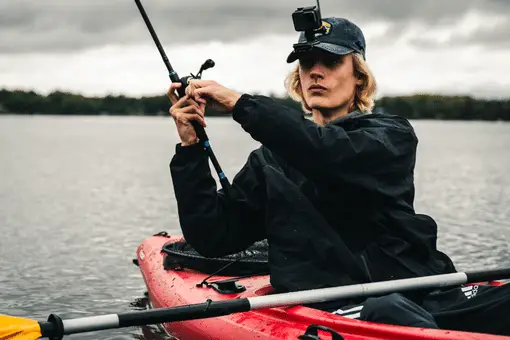
Launching
Launching your fishing kayak from the shore to the water can be tricky if you don’t approach it the right way. Whether you’re one of your crew’s experienced kayak anglers or just a beginner, how you launch your kayak can determine your success. Make sure to slide the kayak into the water and then carefully from on top of it while you straddle the cockpit, lower yourself down into it. Going slowly and with smooth motions decreases the likelihood that you’ll tip.
Casting
If you’re not used to kayak fishing, it can be a learning process. Especially for kayak angling, there are a lot of skills that kayak anglers need to utilize for sight fishing. If you’re using a fishing kayak, then most are designed to be able to stand and provide stability while you’re reeling. Make sure that your cast is even and smooth so as not to jostle the boat. Finally, check that your fishing rod is the correct one for the type of fish you’re attempting to reel.
Reeling
Reeling is one of the tricky aspects of fishing from a kayak. When you reel in a fish, especially larger ones like bass, it can cause your kayak to rock and sway and, in extreme circumstances, tip over. Here are some kayak bass fishing tips for reeling. Although you may be tempted to lean toward the water as you reel in a catch, leaning away is the best technique for kayak fishing. Counterbalancing the pull of the line will help keep you from capsizing.
As you familiarize yourself with basic kayak navigation skills, take note that it’s always best to move along the eddies and currents of the water to avoid fighting upstream. Moving with the current also enables you to drift, and the less you splash the water, the more likely fish won’t be scared away. Finally, when you find the right spot to drop anchor, make sure to do so from the front or back of your kayak, as doing so from the side often leads to capsizing.
Guide To Picking a Fishing Kayak
One of the most important kayak fishing tips is to pick a fishing kayak that meets your needs. The following are some considerations on functionality and design for all your options.
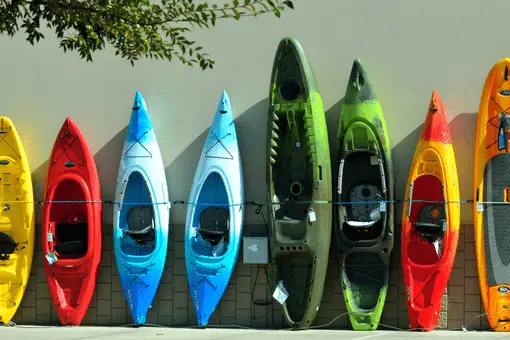
Paddle or Pedal
Fishing kayaks most commonly come as either paddle or pedal types. The main difference between the two has to deal with the way you navigate them. The paddle fishing kayak uses paddles to steer. This can be trickier to do with one hand if you don’t have experience. The pedal fishing kayak, however, makes use of boat pedals to move the boat and a rudder for steering. Depending on your comfort with one-handed steering, either can be a good choice.
Rod Holders
In order to focus on steering your fishing kayak, it may benefit you to invest in a rod holder. Since many bait and tackle boxes for kayak fishing include this as a feature, you may not need to make a separate purchase to acquire one. If you want to install one on your kayak, it’s vital to make it secure and able to hold the resistance of even a big fish catch.
Be sure to check your equipment and see if a holder comes included and, if so, that it’s compatible with your fishing rod.
Seating
Another design aspect of a fishing kayak to consider is the way that seating fits into the craft. Seating can be built into the kayak, as in the sit-on-top or low-profile seating, and it can also be purchased separately. Additionally, there are different kayaks with different seating options. If you’re considering fishing from a kayak with another person, however, a divorce kayak can provide a much-needed second seat.
Size
As you’re investigating different fishing kayaks to purchase, consider where you’ll be taking the kayak. The dimensions make a difference. If you’re going to be on an open canal, then a longer or broader craft won’t be a problem. If, however, you’re focusing mainly on small streams or a river with many tight bends, you have to think about how you’ll be able to move your watercraft or navigate a tricky situation.
Storage
Always make sure you have the space to store your fishing kayak when it’s not in use. It’s best not to leave your kayak out in the elements for storage, as its material can weaken or erode in inclement weather conditions. Keeping your craft under a covering of some kind can help lessen the impact of the weather. While in transit, your kayak must be securely tied down to your vehicle, or you run the risk of it falling from your car.
Other Features
In addition to the basics, you should consider other fishing gear, including a paddle leash to secure your paddle to your kayak, a rudder for added steering, especially if you choose to have a pedal kayak, and a standing deck, to make kayak angling a little easier. These additions can all be worthwhile investments for your kayak fishing trips, but make sure to do your research! You want to get the best equipment for your needs.
Frequently Asked Questions
After reading all of this new information on kayak fishing, you may still have a few more questions. Here are some common additional questions that you may have about kayak fishing.
Should I get professional kayak training?
Professional kayak training isn’t necessary to make the most out of fishing from a kayak, but if you’re unsure or concerned about your ability to maneuver your craft, check out your local parks and other waterways and see if there’s an instructor who can help.
Do I need to follow any regulations for kayak fishing?
There are basic regulations for kayak fishing, like having a PFD or how children have to be outfitted before being on a boat, but it’s best to check your state’s specific regulations as they can vary based on location. Always double-check and follow all safety regulations.
Will I lose things while fishing from a kayak?
There’s never a guarantee when you’re in nature that items won’t get lost. However, you can minimize the chance of that happening by taking extra precautions like tying down equipment, bringing spares, and keeping waterproof containers in your craft. That way, you can relax and enjoy your time in nature.
Is it hard to fish in a kayak?
No. Using a kayak for fishing makes it easier to quietly navigate the water. This allows you to catch fish that are easily startled by louder and larger boats. Kayaks are also lower to the water than power boats which gives you another advantage when it comes to stalking out skittish fish.
Final Thoughts
These kayak fishing tips can help make your kayak fishing seamless and more enjoyable for you and your crew. Always consult park and state guidelines before embarking on your fishing trip, as you don’t want to be caught upstream without a paddle. Following safety guidelines and packing the right equipment can keep you safe and secure for your next big fish catch.
Whether it’s for bass fishing, small river sight fishing, relaxation, or competition, kayak fishing offers a chance to be one with nature while enjoying the challenge of casting, reeling, and navigation. Equipment can make some of the difference, but it’s also important to remember that your best piece of equipment is you. There are so many ways to improve your technique, so get out there and go for it.
While you learn all the best routes and tips for kayak fishing, be sure to share your findings with friends and family, and feel free to upload resources of your own. The kayaking community is always expanding, and the more people contribute to it, the better it is for everyone. Social fishing is a great way to relax and catch up with friends, and even kids can get in on the fun!
- Do You Need An Indicator For Nymph Fishing? - November 16, 2023
- Fishing Safety Tips For Families - September 25, 2023
- What Is The Best Time To Night Fish At A Lake? - September 18, 2023



